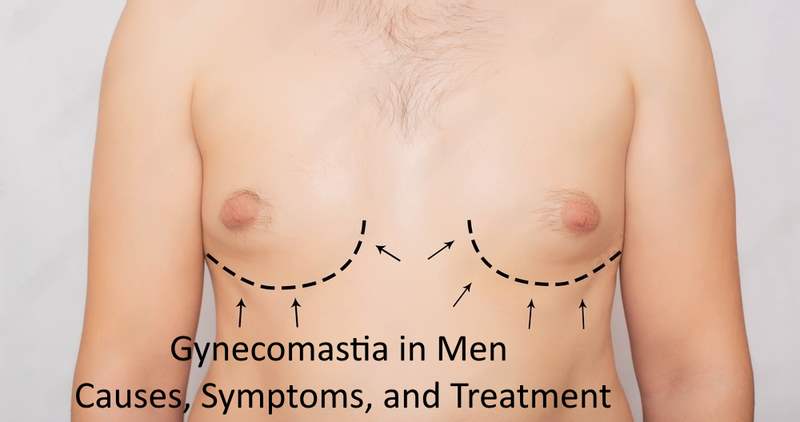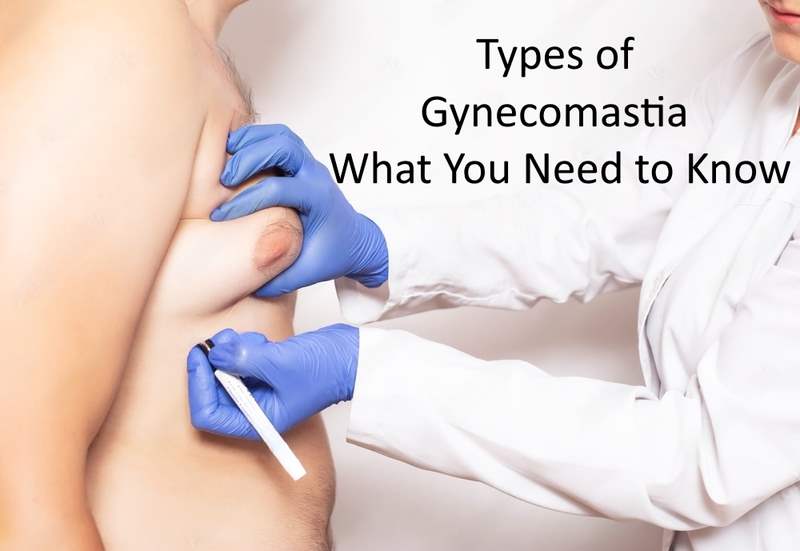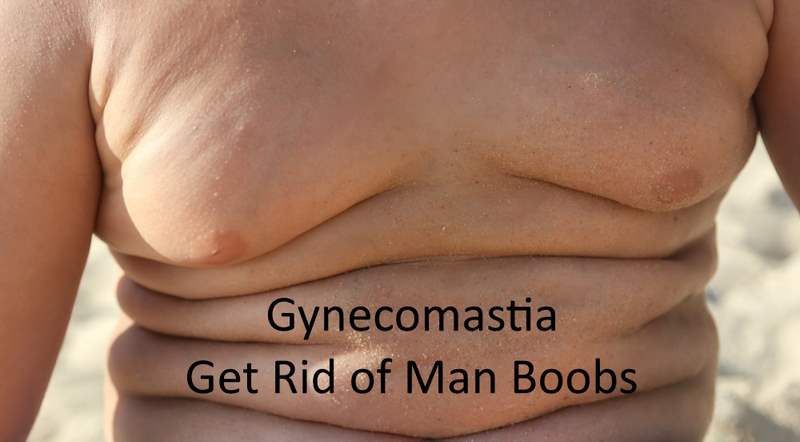Gynecomastia causes, a condition characterized by the enlargement of one or both breasts in men, can be caused by the accumulation of glandular tissue, fatty breast tissue, or a combination of both. It is a physical disorder that accounts for approximately 65% of all male breast disorders.
While “gynecomastia” is the most commonly used term to describe this condition, there are other colloquial terms used in public discourse. Among them, “man-boobs” or “moobs” are the second most common terms. It is noteworthy that individuals who use anabolic steroids, particularly muscle builders, often experience gynecomastia symptoms and may refer to their enlarged male breasts as “bitch tits.”
For those seeking a solution to this condition, gynecomastia surgery, also known as male breast reduction surgery, is considered the fastest and most effective method to eliminate enlarged male breasts.
Gynecomastia causes
Gynecomastia can have various causes. In many cases, it is a benign hormonal imbalance that can occur during puberty, later in life, or as a result of certain illnesses and diseases. Elevated levels of the female hormone, estrogen, due to hormonal imbalances can contribute to the development of gynecomastia.
Additionally, certain medications, such as antidepressants and antibiotics, have been associated with gynecomastia symptoms. Research has also indicated that the use of illegal drugs like anabolic steroids, marijuana, or heroin can lead to the development of gynecomastia.
It is important to note that symptoms of gynecomastia are not always classified as “true” gynecomastia. There is another form called pseudo gynecomastia, which should be distinguished from true gynecomastia to determine the appropriate treatment options for each condition.
True Gynecomastia causes
True gynecomastia refers to the enlargement of male breasts caused by the development of breast tissue similar to that found in females. This breast tissue is typically firm and may sometimes be tender to touch. In certain cases, the breast gland can even secrete fluid resembling breast milk. Male breast reduction surgery is the recognized solution for addressing true gynecomastia symptoms.
Symptoms of True Gynecomastia
Symptoms of true gynecomastia differ from those of pseudo-gynecomastia. Common symptoms of true gynecomastia include:
- Puffy nipples and enlarged areolas
- The presence of a firm glandular lump beneath the nipple
- Breast tenderness and pain
- Nipple discharge (although this is rare)
Pseudogynecomastia
Pseudogynecomastia, also known as “fake gynecomastia,” occurs due to the accumulation of excess fat in the chest area. This condition is often observed in overweight males. The size of the chest in individuals with pseudogynecomastia is usually proportional to the rest of their body and can fluctuate with weight gain and loss.
Enlarged male breasts resulting from pseudo-gynecomastia may appear similar to true gynecomastia. It is crucial not to dismiss this condition, as it can carry the same social stigma as true gynecomastia. For many overweight men, pseudo-gynecomastia presents a significant and embarrassing problem. Weight loss can help reduce the size of enlarged male breasts caused by fatty tissue. However, liposuction can provide a quicker and more reliable solution for individuals with pseudogynecomastia. It’s worth noting that significant weight loss may result in excess skin, which cannot be resolved through diet and exercise alone. In such cases, plastic surgery procedures can help remove the excess skin and provide a firmer, flatter body contour.
Mixed Gynecomastia
Mixed gynecomastia occurs when there is a combination of both glandular tissue and fatty tissue enlargement. While mixed gynecomastia is the most common type, it is worth mentioning that some men who are physically fit with low body fat can still exhibit a mass of glandular tissue. However, this is the exception rather than the rule. Male breast reduction surgery is the recommended treatment for this condition.
Gynecomastia causes can be categorized as physiological or pathological. However, in many cases, the cause remains unknown, and this is referred to as idiopathic gynecomastia.
Physiological Causes
Physiological gynecomastia is caused by hormonal changes in the male body, resulting in an imbalance between estrogen and testosterone. The most prevalent form of physiological gynecomastia is adolescent gynecomastia, which occurs between the ages of 10 and 16. Current research indicates that approximately 38% of adolescents experience gynecomastia symptoms. Fortunately, about 75% of these cases resolve within two years, and 90% resolve within three years without any treatment.
Other physiological causes of gynecomastia include:
- Aging: As men age, hormonal changes can occur, leading to an increased risk of developing gynecomastia.
- Puberty: Hormonal imbalances during puberty can cause temporary gynecomastia, which often resolves on its own.
- Newborns: Male infants may develop temporary gynecomastia due to the presence of their mother’s hormones in their system. This usually resolves within a few weeks.
Pathological Causes
Pathological gynecomastia is caused by underlying medical conditions or the use of certain medications. Some of the common pathological causes include:
- Hormonal disorders: Conditions such as hypogonadism, hyperthyroidism, and tumors of the pituitary gland or testes can disrupt the balance of hormones and lead to gynecomastia.
- Medications: Certain medications can cause gynecomastia as a side effect. These include anti-androgens, anabolic steroids, some anti-depressants, anti-anxiety medications, and certain chemotherapy drugs.
- Chronic liver disease: Liver cirrhosis and other liver diseases can affect hormone metabolism, leading to gynecomastia.
- Kidney failure: Impaired kidney function can disrupt hormone balance and contribute to gynecomastia.
- Tumors: Rarely, tumors in the testes, adrenal glands, or pituitary gland can produce hormones that cause gynecomastia.
Treatment Options
The treatment approach for gynecomastia depends on the underlying cause, severity of symptoms, and the individual’s preferences. Here are some treatment options:
- Observation: In cases of physiological gynecomastia, especially in adolescents, the condition may resolve on its own without any treatment. Regular monitoring is recommended to ensure the condition improves over time.
- Medication: In some cases, medication may be prescribed to treat gynecomastia. For example, if the condition is caused by an imbalance of hormones, medications like tamoxifen or raloxifene may be prescribed to block the effects of estrogen or stimulate testosterone production. However, the effectiveness of medication treatment is limited, and it may not be suitable for all cases.
- Surgery: Male breast reduction surgery is the most effective and permanent treatment for gynecomastia. There are two main surgical techniques used:
- Liposuction: This technique is used when gynecomastia is primarily caused by excess fatty tissue. It involves the removal of fat through small incisions using a cannula (a thin tube) and suction.
- Excision: In cases where there is a significant amount of glandular tissue or sagging skin, surgical excision may be necessary. This technique involves making incisions to remove the excess breast tissue and reshape the chest.
In some cases, a combination of liposuction and excision may be used to achieve optimal results. Gynecomastia surgery is typically performed on an outpatient basis under general anesthesia or local anesthesia with sedation.
More About Treatment
- Lifestyle changes: For individuals with pseudogynecomastia caused by excess weight, lifestyle modifications such as regular exercise and a healthy diet can help reduce the size of the breasts. However, it’s important to note that weight loss alone may not eliminate gynecomastia, especially if there is glandular tissue present.
It’s essential to consult with a qualified healthcare professional or a plastic surgeon who specializes in gynecomastia to determine the most appropriate treatment option based on the individual’s specific situation.
Emotional and Psychological Impact
Gynecomastia can have a significant emotional and psychological impact on those affected. It may cause feelings of self-consciousness, embarrassment, and even depression. Support from family, friends, and healthcare professionals can be crucial in managing the emotional aspects of gynecomastia. Seeking counseling or therapy may also be beneficial for individuals struggling with body image issues related to gynecomastia.
In conclusion, gynecomastia is a common condition characterized by the enlargement of male breasts. It can have various causes, including hormonal imbalances, certain medications, and underlying medical conditions. Treatment options range from observation and medication to surgical interventions like liposuction and excision. Consulting with a healthcare professional is essential to determine the most suitable treatment approach for each individual. Additionally, addressing the emotional and psychological impact of gynecomastia is an important aspect of managing the condition.





